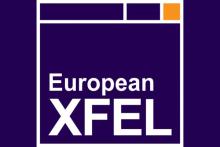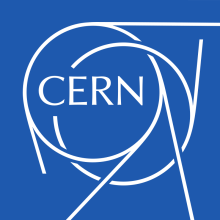wielkanauka.pl
Big Science - a project that connects science and industry
The Big Science project run by the Science and Technology Park Świerk in cooperation with Polish Institutes operating in the Big Science market is an ever-growing communication and information platform that connects Polish entrepreneurs, scientists and institutions with the largest research infrastructures in the world.
We invite you to visit the platform www.wielkanauka.pl and follow the Big Science profile on LinkedIn.
We organise and invite you to events that realistically connect people and institutions.
We invite your company to engage in dialogue with the largest research centres - CERN, F4E, EuXFEL and others.
Why it matters:
Big Science infrastructures are located all over Europe, with international teams of scientists, engineers and specialists working, among other things: on projects related to modern energy sources, molecular biology and medicine. These centres function like any large enterprise, which needs suppliers not only of innovative solutions, but also of standard products necessary for the operation of the centre.
Read the case study on the Big Science website and find out that:
- Polish companies have the potential to compete effectively in international calls,
- cooperation with Big Science accelerates technological development,
- science and industry in Poland can work together to create a strong offer on international markets.
Learn more:
European Organization for Nuclear Research (CERN)
The European Organization for Nuclear Research CERN is a scientific and research institution. It is located in the northwestern city of Geneva. It borders Switzerland and France.
Currently, 23 countries cooperate with the center. It employs 2,600 workers and thousands of scientists and engineers from around the world. Their job is to study the largest particle gas pedal, the Large Hadron Collider.
CERN itself is an acronym for the once-famous name of the European Council for Nuclear Research (French: Conseil Européen pour la Recherche Nucléaire). Even despite changes - the introduction of the Convention in 1953 - the acronym was retained. The name European Laboratory for Particle Physics (French: Laboratoire Européen pour la Physique des Particules) is also currently in use, but is still not considered official.
Link to infrastructure: https://www.home.cern/
International Thermonuclear Experimental Reactor (ITER)
ITER is a thermonuclear reactor, but also an international research project related to it. Its goal is to test whether and to what extent large-scale fusion energy production is possible.
The overarching goal of the project is to build a large-scale tokamak. It is inspired by smaller products such as DIII-D and TFTR. In 2006, it was estimated that the project would end in 2036, with the last 20 years being the reactor operation itself. The entire project is estimated at €10,000,000,000. Such a gigantic sum ranks the reactor as the second most expensive research program.
The large tokamak is being built in Cadarache (south of France). The countries and unions involved in the process are:
- European Union,
- China,
- Japan,
- United States,
- South Korea,
- Russia,
- India.
Before India joined the program in 2005, it was expected that the EU would cover half of the cost of building the tokamak, and the other countries would each pay 10% in the form of components. The first ignition is expected to take place in 2025. Previously, 2019 was predicted, but the project is behind schedule.
The designs call for ITER to sustain a fusion reaction for about 1,000 seconds each time, while yielding 500-1100 MW of power. Energy is to be emitted as heat, with no conversion to electricity expected.
In the future, ITER is to serve as a base for further fusion reactor projects, which are expected to reach as much as 3,000 to 4,000 MW.
Link to infrastructure: https://www.iter.org/
European X-ray Free Electron Laser (XFEL)
 The European XFEL is being built at DESY synchrotron research center in Hamburgu.
The European XFEL is being built at DESY synchrotron research center in Hamburgu.
Modern molecular biology, pharmacology, biophysics with medical applications, materials engineering, crystallography and condensed matter physics will not progress without the use of new radiation sources like the XFEL in experiment.
The mission of the National Consortium of scientific entities interested in participating in the construction and operation of the European Free Electron Laser (XFEL) is to work for significant Polish participation in the construction and operation of this unique source.
The goal of the National Consortium is:
- to ensure effective use of the opportunities created by Poland's participation in the XFEL project by conducting information and training activities on the conditions for participation of industry and scientific entities in this endeavor;
- to coordinate and provide organizational support for the activities of Consortium members related to their participation in the XFEL project.
The basis of the Consortium's activities is funding obtained from the Ministry of Science and Higher Education in the form of special projects to finance research support activities.
Link to infrastructure: https://www.xfel.eu/




Project financing: Project titled "Great Science for Polish Innovation", contract number: NdS/543816/2022/2022 financed by the Ministry of Education and Science.

